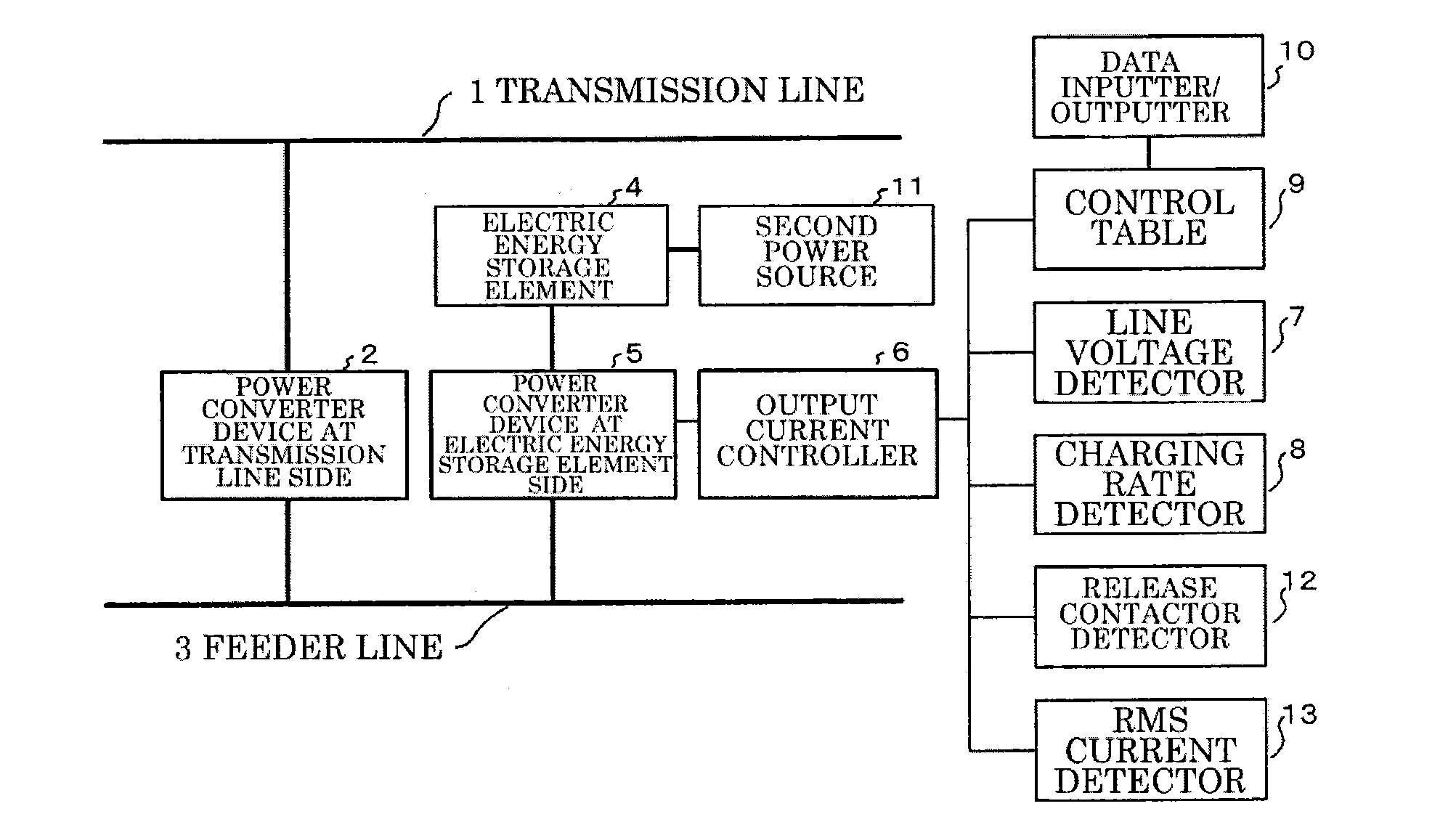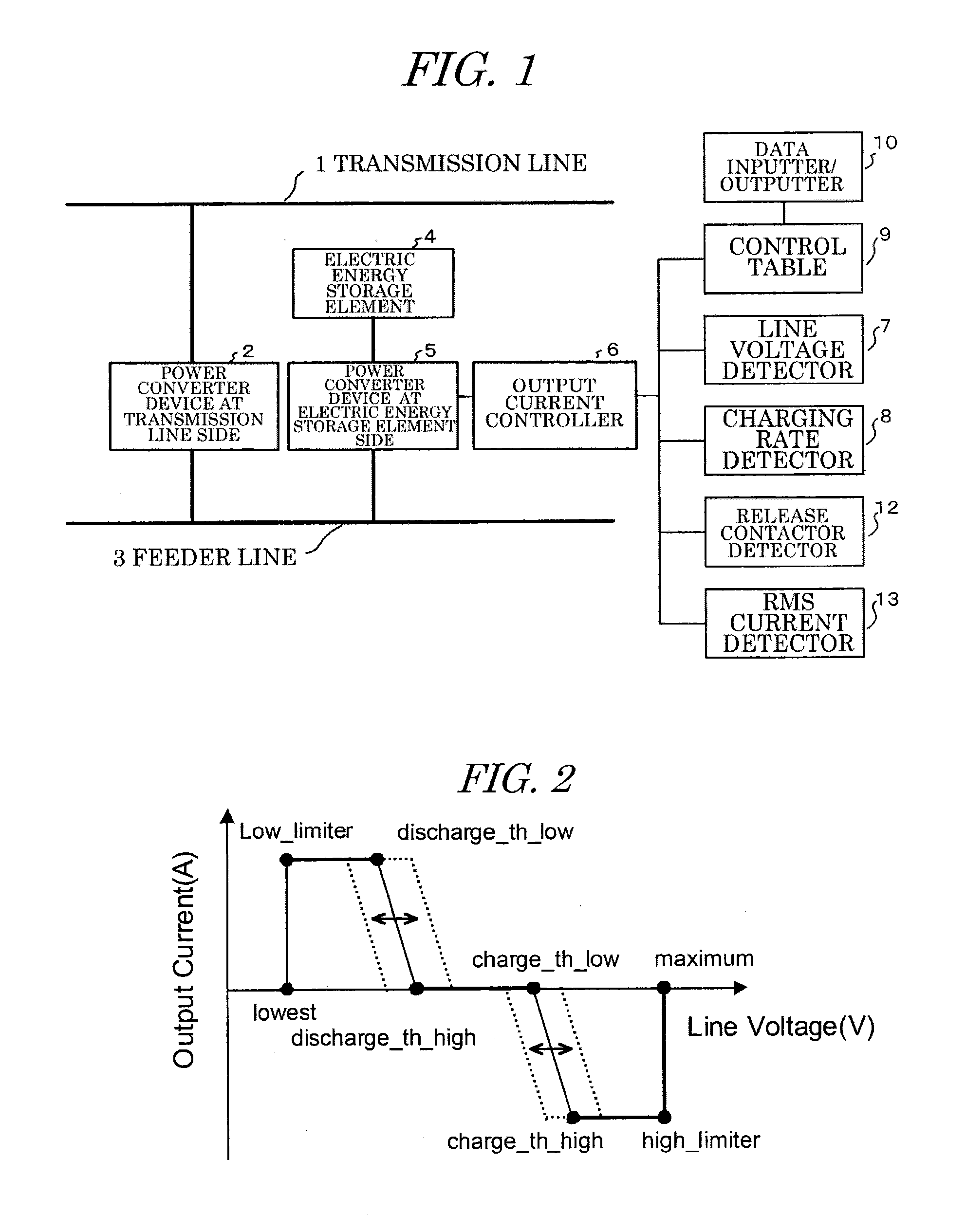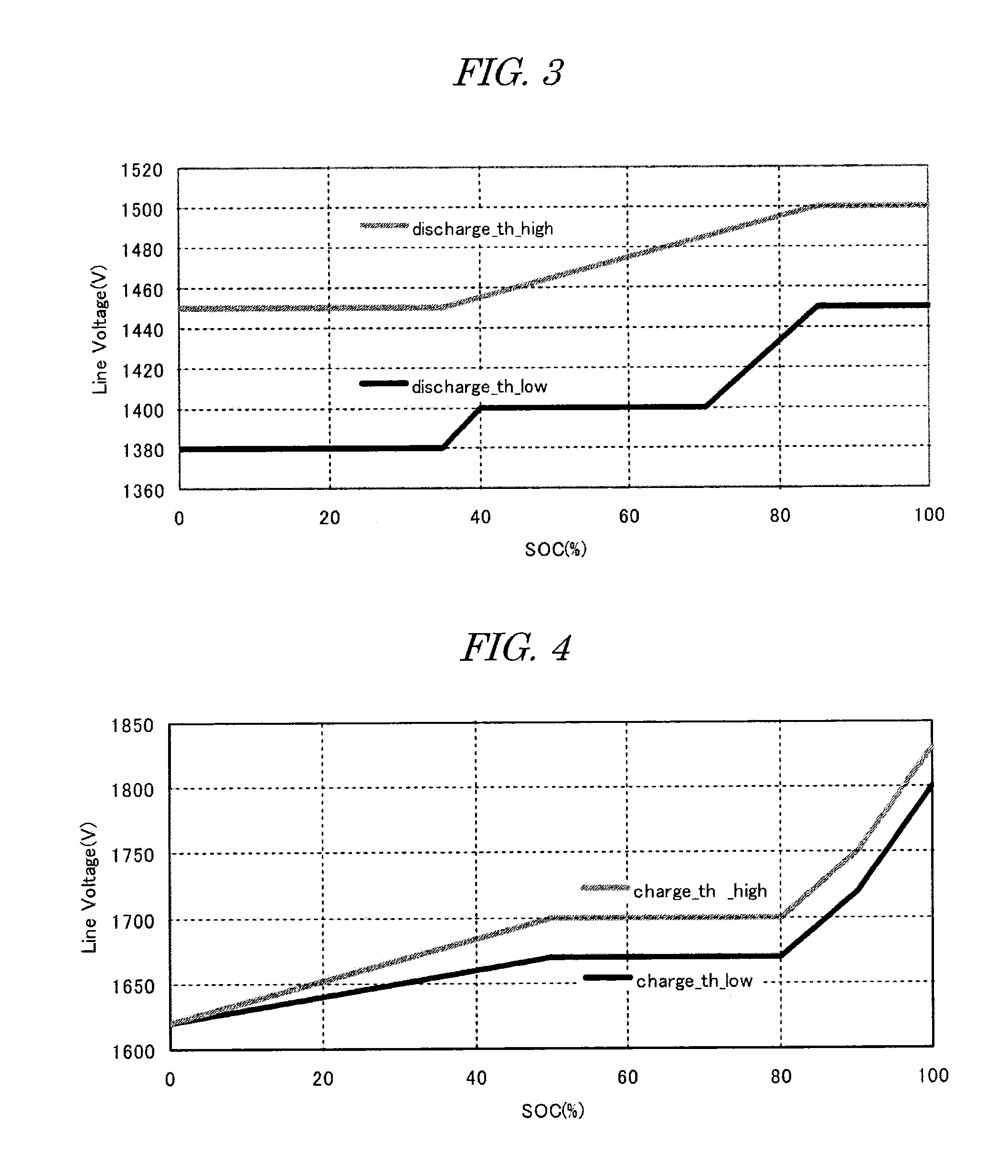Electric energy storage device and installation-operation method thereof
a technology of electric energy storage and installation method, which is applied in the direction of electric energy management, battery/fuel cell control arrangement, transportation and packaging, etc., can solve the problems of large line voltage change, difficult to perform effective regeneration, and inability to perform power regeneration to the ac power source system at the deceleration of a railroad vehicl
- Summary
- Abstract
- Description
- Claims
- Application Information
AI Technical Summary
Benefits of technology
Problems solved by technology
Method used
Image
Examples
first embodiment
A. First Embodiment
[Structure of First Embodiment)
[0032]A first embodiment will be specifically explained with reference to FIG. 1.
[0033]FIG. 1 illustrates a whole structure of a feeder system including an electric energy storage device according to this embodiment. According to the feeder system of this embodiment, the power from a transmission line 1 is converted by a power converter device 2 at the transmission line side, and the DC power is supplied to a feeder line 3. In this case, the rated voltage of the feeder line 3, that is a DC power source, is a voltage when the power converter device 2 at the transmission-line side is outputting a current that permits a successive operation. The power converter device 2 at the transmission-line-1 side includes a diode rectifier or a PWM converter, etc. Voltages of the feeder line 3 are, for example, DC 600 V, 750 V, 1500V, and DC 3000 V, and a voltage fluctuation occurs at voltages therearound.
[0034]The feeder line 3 is connected with a...
second embodiment
B. Second Embodiment
[0056]FIG. 5 illustrates a second embodiment. According to the second embodiment, a second power source 11 is connected to the electric energy storage element 4. As an example of the second power sources 11, power generators, such as solar power generator may be used, wind power generator, and hydro-power generator. Both DC power source and AC power source are available as the second power source 11. In the case of the DC power source, the output power thereof is directly input into the electric energy storage element 4. When the second power source is an AC power source, an AC power obtained by rectifying an original output power is supplied to the electric energy storage element 4.
[0057]When power is supplied to the electric energy storage element 4 from the second power source 11, like the above-explained first embodiment, the output current controller 6 adjusts the charging / discharging characteristics from the feeder line 3 in accordance with the charging rat...
third embodiment
C. Third Embodiment
[0059]In the respective embodiments explained above, the electric energy storage element 4 can be configured by a plurality of electric energy storage elements. More specifically, as illustrated in FIG. 7, a large number of electric energy storage elements 4 (hereinafter, referred to as an electric energy storage element module) connected in series are connected in multiple rows in parallel. In this case, each electric energy storage element module may be configured to be released from the system through a release contactor 4a. However, in order to detect how many modules are released among the plurality of electric energy storage element modules, as illustrated in FIG. 1, a detector 12 is connected to the output current controller 6, and the output current controller 6 restricts charging / discharging currents supplied to the power converter device 5 for the electric energy storage elements in accordance with the number of detected modules.
[0060]More specifically, ...
PUM
 Login to view more
Login to view more Abstract
Description
Claims
Application Information
 Login to view more
Login to view more - R&D Engineer
- R&D Manager
- IP Professional
- Industry Leading Data Capabilities
- Powerful AI technology
- Patent DNA Extraction
Browse by: Latest US Patents, China's latest patents, Technical Efficacy Thesaurus, Application Domain, Technology Topic.
© 2024 PatSnap. All rights reserved.Legal|Privacy policy|Modern Slavery Act Transparency Statement|Sitemap



